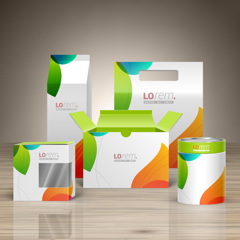EFIA Looks at a Flexo Challenge
- Published: February 22, 2018
LEEDS, UK | The European Flexographic Industry Association (EFIA) has issued a report on flexography, saying its members are in the midst of a significant storm that may change the flexo industry forever if brands decide to respond to the consumer and media outpouring. EFIA explains, “We’ve already seen banning of black plastic trays from Waitrose [grocery] due to their inability to be identified by plastics sorting systems within the UK recycling infrastructure and a commitment to plastic-free aisles by Iceland. Combine the so-called ‘latte tax,’ banning of plastic straws by restaurants, adoption of deposit return systems and carrier bag taxes, and the whole situation is escalating at a pace few anticipated.” 
EFIA says it understands both sides of what is a contentious argument, and its position as a board is that all materials have their merits and detractions when you consider the definition of sustainability. The organization’s membership represents many packaging types from corrugate to labels and flexible and rigid plastics, but EFIA’S view is that the argument playing out in the media at the moment is distorted. “The reality is that depending on whether we look through the lens of overall carbon footprint, water footprint, energy use, recyclability, compostability, or biodegradability…. the list goes on, the argument can be swung in many directions between pack types and substrates.” However, the real issue, says EFIA, is the collective inability of the entire packaging and print industry to educate consumers on the point that packaging is in fact a green technology in itself, i.e., reducing waste and protecting and preserving the carbon used to produce products in the first place.
By means of example, the EFIA points out that the carbon footprint of a fillet steak on the consumer’s dinner table has taken huge amounts of resource and energy to produce before it’s even packed. According to the research organization INCPEN, packaging represents less than 5% of the overall carbon footprint of a typical food product, when assessed from a cradle-to-grave perspective. The transport, refrigeration, and cooking of the product is far more onerous than the lightweight, micron-thin carton or plastic tray its packed in. To put this in perspective, if every family reduced its driving time each year and simply saved one tank of fuel consumption, this carbon saving would be in excess of their entire year of plastic packaging consumption.
The association says, “We’re nibbling at the edges of our consumerist world rather than tackling the key issues that are going to make the difference to our planet over the long term. Humans are at fault, not the materials we select. Littering, marine waste, and ecological damage occur because society is not caring, understanding or simply ignorant of what it is doing to the environment. We all have obligations as human beings to act responsibly and this part of the argument seems to be lost in many of the knee-jerk reactions currently underway.”
In addition there must be new investment in common systems and processes to enable consumers to dispose of their waste responsibly. Minimization of initial resource use, a reduction in end-of-life waste materials, growth in effective recycling programs, and optimization of the circular economy must be achieved, says EFIA, and it believes this all starts and ends with reasonable government and media and consumer understanding of the reality of the situation which is simply lacking.
The resulting challenge for the flexo industry is now going to be how to adapt to a new reality, says EFIA. The supply chain is going to want to challenge and develop new packaging concepts, depending on where their beliefs and preferences (and pressures) lie. As a result, converting capacity and business efficiency is undoubtedly going to suffer whether its involved in a major upswing or downswing in new business.
According to EFIA, there are very few packaging or print groups handling both plastic and fiber substrates today. The exchange of materials, applications, and requirements for new product developments are going to stretch already thin resources in what is undoubtedly a margin-constrained market.
While the paper and board industry may be rubbing their hands together with glee at the prospect of the demise of plastics in the short term, it’s no mean feat to translate chilled and frozen food and drink applications into fiber-based substrates without increased pack design complexity. This will certainly raise further challenges for the already burdened recycling industry. Of course, current world capacity for paper would also be unable to handle the additional packaging volumes, and prices are already escalating so a perfect storm is potentially brewing.
The EFIA states that the entire packaging converting and print industry is going to be under pressure to respond, innovate, and deliver capacity in order to meet this undoubted pressure for change.
The board of EFIA will be working with a range of industry associations and bodies to understand the potential risks, challenges, and opportunities for its members. The organization also will be entering into the debate about packaging myths in the hopes of supporting a consumer education program for the benefit of members.
This email address is being protected from spambots. You need JavaScript enabled to view it.




